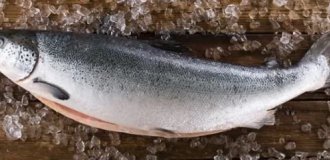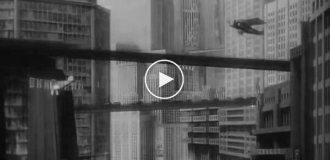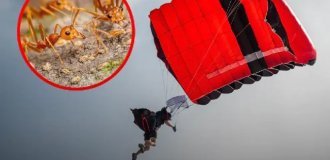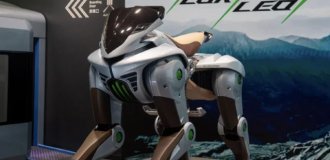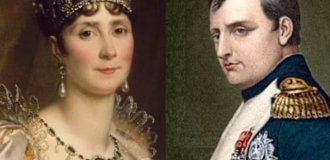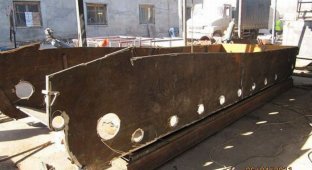The German super-heavy tank E-100 appeared as a result of an attempt to create a competitor to the Maus, developed by Ferdinand Porsche.
Employees of the Adlerwerke company began work on this project on July 30, 1943. The E-100 was supposed to be the most powerful and heaviest in the E-series, having Mouse-level protection and good mobility at the same time.
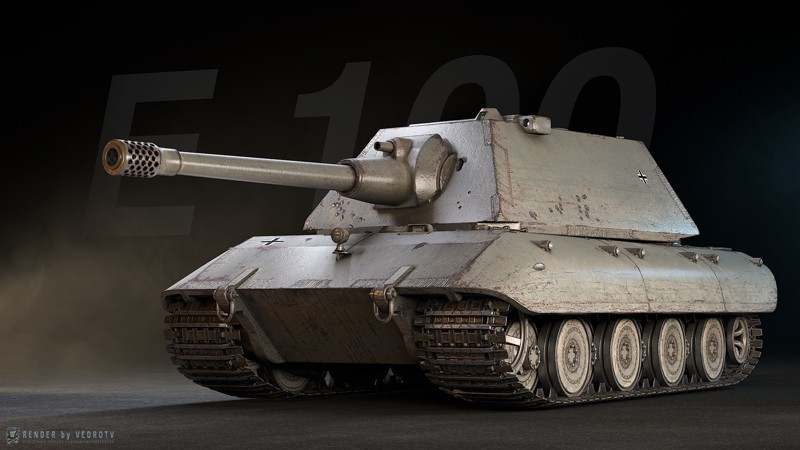
The detailed report of the American Scientific and Technical Intelligence Service (ETOUSA), which examined the enterprises of the Kassel company Henschel and Son AG on May 24, 1945, speaks of the fragments of a previously unknown experimental heavy tank and artillery self-propelled gun found there. As it turned out later, the self-propelled gun was already the previously mentioned “Cricket”, and the tank’s chassis belonged to the E 100. The American report states that “according to our estimates, the tank should have weighed somewhere in the region of 110 tons”, and its appearance “generally resembles the Tiger B”, however, there are some differences: (1) increased length and width; (2) increased thickness of armor plates; (3) wider tracks; (4) new chassis design. There are no torsion springs. A search has been carried out for spring springs, which, presumably, were used together with hydraulic shock absorbers... The main parts of the tank (gun, turret, suspension and front wheels) are missing.”

Prototype of the E-100 tank in the hangar of the Paderborn plant, spring 1945.

The E 100 tank, fragments of which were discovered by the Americans, was the first combat vehicle of a new experimental series (the so-called E series (The letter *E* stood for “Entwickelung”), which since 1943 has been developed under the direct supervision of the Ministry of Armament and Military Industry. One of The goals of the project were to partially involve the potential of automobile companies that had not yet participated in tank building in fulfilling orders. Trial orders were sent to such enterprises as Klockner-Humbold-Deutz and Magirus, Argus and Adler. It was planned put on the conveyor the following types of combat vehicles:
The E 5 is a lightweight 5-ton tank that can be converted into an armored personnel carrier, mobile radio station or reconnaissance tank.
E 10 - light 10-ton tank destroyer or chassis for light weapons.
E 25 - medium 25-ton tank destroyer, reconnaissance tank or heavy weapons chassis.
E 50 - 50- or 65-ton “light battle tank”, which was supposed to replace the “Panther” in the future.
E 7 5 - 7 5 - or 80-ton “medium* battle tank, future replacement for the Tigers.”
E 100 - heavy 140-ton tank
The famous photograph of a British soldier posing on the hull of an E-100 tank

On August 25, 1945, Colonel-Engineer Heinrich Ernst Kniepkampf (The original interrogation protocol is kept in the library of the Tank Museum), head of the advanced tank weapons department of the Army Armament Directorate, was interrogated in London. When asked for what purpose work began on creating a new series of tanks and what were its main design differences from the previous ones, the engineer answered the following. “There were several differences:
(1). In order to create very strong frontal armor, it was intended to transfer as much weight as possible to the rear of the tank.
(2). To simplify the production and maintenance of the tank, it was planned to combine the engine and power train. (3). It was planned to create four combat vehicles E 10, E 25, E 50 and E 100... This program was proposed by engineer Kniepkampf in May 1942 and finally accepted for implementation in April 1943.
(4). The undercarriage must be closed from the outside.
(5). It was supposed to design the suspension in such a way that if the front or rear wheels failed, the caterpillar would continue to be tensioned on the remaining rollers. Recognizing the advantages of front-wheel drive, it was nevertheless noted that rear-wheel drive is much more convenient for a military vehicle, since the drive wheels are located in the rear, least vulnerable part of the tank.”

The hull of the E-100 tank in one of the tank museums

Comparison of tanks: Soviet tank IS-7 and German E-100. This is roughly what the rivals would have been like if the war had lasted two to three years longer.

According to the designers, the E 100 was supposed to be armed with the same turret as the Little Mouse, and it was supposed to be installed in the same Krupp turret. However, things did not go further than creating the chassis. The engine was supposed to be a 12-cylinder carburetor Maybach HL 230 engine with a power of 700 hp. s, therefore, the ratio of engine power to tank weight would be 5 liters. With. per ton The same exact engine should have been equipped with the E 50 and E 75. Subsequently, an improved engine with a capacity of 1000-1200 hp was created. s, however, if used, the power-to-weight ratio would already be 8.5 liters. s per 1 ton. For testing, a regular Maybach HL 230, used on Tigers, was installed on the chassis. The use of wide (102 cm) tracks made it possible to reduce the pressure of a 140-ton tank on the ground to 1.4 kg/cm2. In general, due to the steel road wheels manufactured by MAN, the chassis was very reminiscent of the suspension of the Royal Tiger. In addition, although, according to Kniepkampf, the new series was supposed to be rear-wheel drive, the E 100 chassis was still front-wheel drive.


An abandoned weapon at a captured training ground.

Rear part of the E-100 tank

View of the suspension of the E-100 tank



Two men lift an armored hatch over the engine compartment of an E-100 tank with a crowbar

View of the cooling system of the E-100 tank

The engine of the E-100 tank, open and covered with an armored hatch with armored caps. It could have been opened with a crowbar and two people.

Elements of the engine, chassis and suspension.


Tank E-100 in the game WoT





